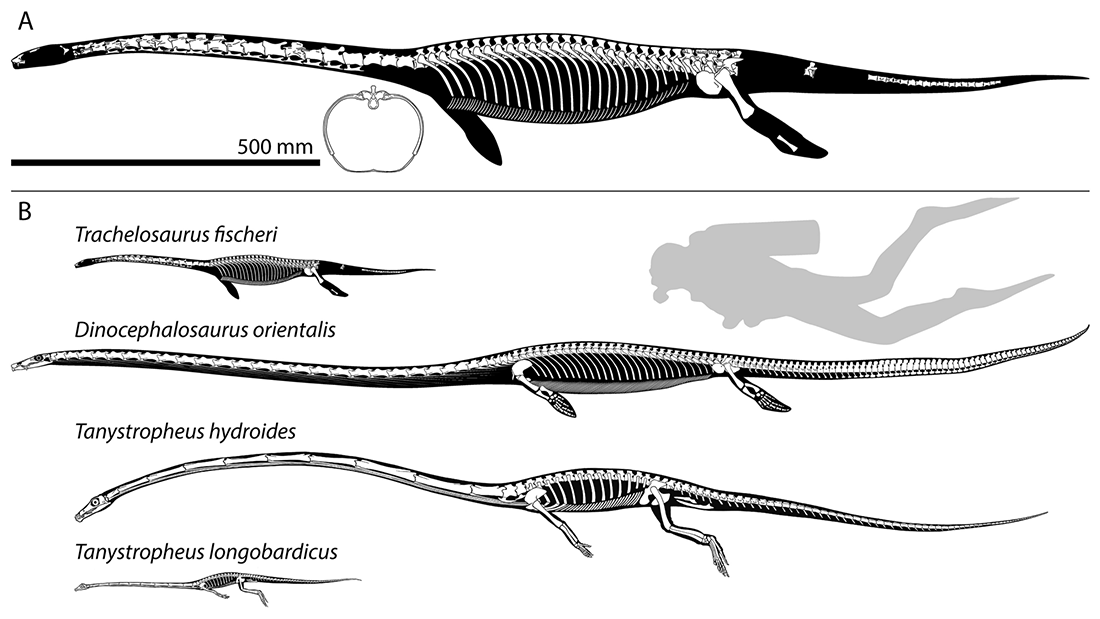Sometimes it pays off to have a second look at something even over 100 years later. The fossil remains of a marine reptile that lived 247 million years ago have been re-examined 106 years after it was first described. The researchers have concluded that this means Trachelosaurus fischeri is the world’s oldest long-necked marine reptile.
Trachelosaurus fischeri was first discovered back in 1918 in the layers of Buntsandstein sandstone in Bernburg an der Saale, Germany. At the time there was some degree of confusion and controversy about what kind of animal this fossil represented. This is because the fossil is something of a mess with remains scattered across the rock in which it was preserved and not arranged in an anatomically organized way.
Originally, Trachelosaurus fischeri was thought to be a reptile of 150-170 centimeters (4.9-5.5 feet) long with a small head and very long neck with around 21 vertebrates, short limbs, and a moderately long tail, the team write in their paper. However, other researchers came to look at the fossil and several revisions and changes to the classification of T. fishceri have been made over the years.
Some suggested that the fossil was a protorosaur that fitted into the Squamata order, while others thought that T. fischeri should be assigned to its own family the Trachelosauridae. The fossil has always been something of a mystery with various researchers unsure which other specimens it was closely related to.
Comparison of Trachelosaurus fischeri with other marine reptile tanysaurians.
“Trachelosaurus fischeri is the first fossil of this reptile group to be found outside of China. It is also the oldest long-necked marine reptile known to date,” Dr Stephan Spiekman, an expert on this group of animals at the State Museum of Natural History Stuttgart, said in a translated statement.
Since the discovery of Trachelosaurus fischeri, many more fossils of similar looking marine reptiles have been found, however, most of these are known from Chinese deposits. By looking closely at these fossils, the team came up with criteria that group T. fischeri and other Chinese fossils, most notably the fully marine reptile Dinocephalosaurus orientalis, creating a clade to classify them called Tanysauria.
“Through research on Chinese fossils of the long-necked marine reptile Dinocephalosaurus, which I published with colleagues just a few weeks ago, we were able to solve the mystery of Trachelosaurus fischeri. The anatomy shows us that it is closely related to Dinocephalosaurus,” continued Dr Spiekman.
At the beginning of the Triassic period, there was a large increase of new reptile species both in the seas and walking on land after the extinction event approximately 252 million years ago. The team think the marine reptile was washed into shallow waters as tetrapod footprints can also be seen on some of the seven slabs that make up the fossil.
The authors emphasize the use of museum collections in the understanding of this fossil and how valuable they are as resources to better understand the fossils that have been discovered in years past.
The paper is published in the Swiss Journal of Palaeontology.
Source Link: 247-Million-Year-Old Fossil Is The World's Oldest Long-Necked Marine Reptile
